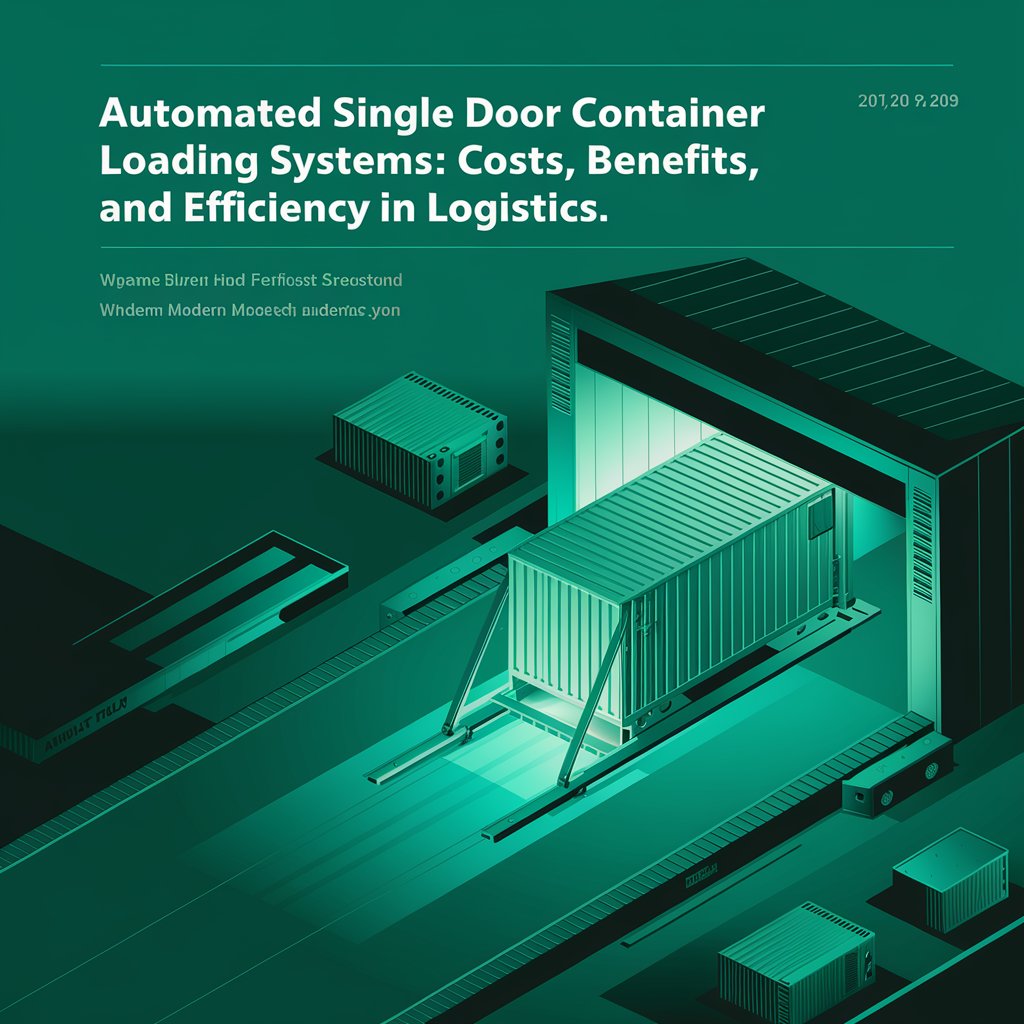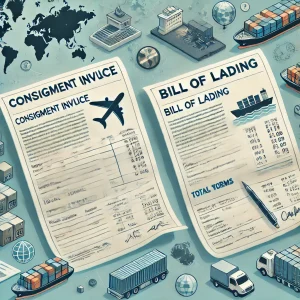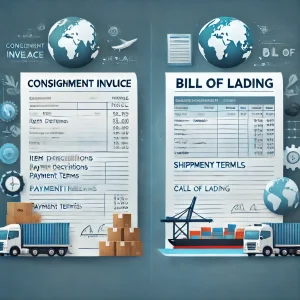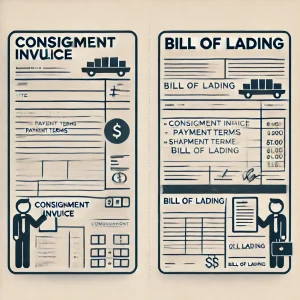Consignment Invoice vs. Bill of Lading: Key Differences Explained

What is a Consignment Invoice?
To begin our exploration of consignment invoice vs bill of lading, let’s first define what a consignment invoice is. A consignment invoice is a commercial document issued by the seller (consignor) to the buyer (consignee) that provides detailed information about the goods being shipped. It serves as a bill for the products and is primarily used for financial and customs purposes.
Key Elements of a Consignment Invoice
When comparing consignment invoice vs bill of lading, it’s important to understand what information each document contains. A typical consignment invoice includes:
- Shipper and consignee details (names, addresses, contact information)
- Invoice number and date
- Detailed description of goods, including quantities and unit prices
- Total value of goods
- Payment terms and due dates
- Currency of transaction
- Country of origin of goods
- Incoterms (international commercial terms)
- Any special instructions or additional charges
What is a Consignment Invoice?
To begin our exploration of consignment invoice vs bill of lading, let’s first define what a consignment invoice is. A consignment invoice is a commercial document issued by the seller (consignor) to the buyer (consignee) that provides detailed information about the goods being shipped. It serves as a bill for the products and is primarily used for financial and customs purposes.
Key Elements of a Consignment Invoice
When comparing consignment invoice vs bill of lading, it’s important to understand what information each document contains. A typical consignment invoice includes:
- Shipper and consignee details (names, addresses, contact information)
- Invoice number and date
- Detailed description of goods, including quantities and unit prices
- Total value of goods
- Payment terms and due dates
- Currency of transaction
- Country of origin of goods
- Incoterms (international commercial terms)
- Any special instructions or additional charges
Purpose of a Consignment Invoice
In the context of consignment invoice vs bill of lading, the consignment invoice serves several crucial purposes:
- Financial Record: It provides a detailed breakdown of the transaction for both the seller and buyer.
- Customs Valuation: Customs authorities use this document to determine the value of goods for duty and tax calculations.
- Proof of Sale: It serves as evidence of the commercial transaction between parties.
Inventory Management: It helps in tracking the movement and value of goods in transit.

What is a Bill of Lading?
Moving on in our comparison of consignment invoice vs bill of lading, let’s examine the bill of lading (BOL). A bill of lading is a legal document issued by a carrier to a shipper that details the type, quantity, and destination of the goods being transported. It’s a crucial document in the shipping process, serving multiple important functions.
Key Components of a Bill of Lading
When discussing consignment invoice vs bill of lading, it’s vital to understand what information a BOL contains:
- Names and addresses of the shipper, consignee, and carrier
- Description of goods, including weight and dimensions
- Number of packages or units
- Shipping route and destination
- Vessel name and voyage number (for sea freight)
- Terms and conditions of transport
- Date of shipment
- Signature of the carrier or their agent
The Three Main Functions of a Bill of Lading
The bill of lading serves three primary functions, which set it apart when comparing consignment invoice vs bill of lading:
- Receipt of Goods: It acts as a receipt, confirming that the carrier has received the goods as described.
- Contract of Carriage: It outlines the agreement between the shipper and the carrier for transporting the goods, including terms and conditions.
- Title Document: In many cases, it serves as a document of title, allowing the holder to claim ownership of the goods upon arrival.
Key Differences Between Consignment Invoice and Bill of Lading
Now that we’ve defined both documents, let’s delve into the core differences in the consignment invoice vs bill of lading comparison:
1. Purpose
- Consignment Invoice: Primarily a financial document used for billing and customs valuation.
- Bill of Lading: A transport document that also serves legal and ownership functions.
2. Issuer
- Consignment Invoice: Issued by the seller (consignor) to the buyer (consignee).
- Bill of Lading: Issued by the carrier or their agent to the shipper.
3. Content Focus
- Consignment Invoice: Focuses on the value and payment terms of the goods.
- Bill of Lading: Emphasizes transport details, legal terms, and receipt of the shipment.
4. Legal Implications
- Consignment Invoice: While important for customs and financial purposes, it doesn’t typically transfer ownership rights.
- Bill of Lading: Has significant legal weight as it can transfer ownership rights and serves as a contract of carriage.
5. Usage in the Shipping Process
- Consignment Invoice: Used by shippers, consignees, and customs for valuation and payment purposes.
- Bill of Lading: Used by the shipper, carrier, and consignee to manage the logistics and legal aspects of shipping.
6. Timing of Issuance
- Consignment Invoice: Usually prepared before the goods are shipped.
- Bill of Lading: Issued after the goods have been loaded onto the vessel or vehicle.

When to Use Each Document
Understanding when to use each document is crucial in the consignment invoice vs bill of lading comparison:
Consignment Invoice
- During customs clearance to declare the value of goods
- For accounts payable and receivable processes
- As proof of sale in international transactions
- For inventory and asset tracking purposes
Bill of Lading
- To claim goods at the destination port or warehouse
- As evidence in transport disputes or insurance claims
- To transfer ownership of goods while in transit
- To verify the conditions under which the goods were shipped

Why Both Documents Are Essential in Shipping
In the consignment invoice vs bill of lading discussion, it’s important to note that both documents are crucial for a smooth shipping process:
- Comprehensive Documentation: Together, they provide a complete picture of the commercial and logistical aspects of a shipment.
- Legal Compliance: Both documents help ensure compliance with international trade laws and regulations.
- Financial Accuracy: The consignment invoice supports accurate billing and payment, while the bill of lading helps track liability and ownership.
- Customs Efficiency: Having both documents properly prepared can expedite customs clearance processes.
- Dispute Resolution: In case of discrepancies or disputes, having both documents provides a more comprehensive record of the transaction and shipment.
Common Mistakes and How to Avoid Them
When dealing with consignment invoice vs bill of lading, certain mistakes can lead to delays, financial losses, or legal issues:
- Confusing the Roles: Remember that the consignment invoice is for commercial and customs purposes, while the bill of lading is for transport and ownership.
- Inconsistent Information: Ensure that the details on both documents match, especially regarding the description and quantity of goods.
- Incomplete Documentation: Always provide all required information on both documents to avoid delays in processing or customs clearance.
- Neglecting Legal Implications: Be aware of the legal weight carried by the bill of lading, especially in terms of ownership transfer.
Improper Storage: Keep both documents safe and accessible, as they may be needed at various points in the shipping process.

Conclusion
In the world of international trade and logistics, understanding the difference between consignment invoice vs bill of lading is crucial for smooth operations. While both documents are essential in the shipping process, they serve distinct purposes:
- The consignment invoice is primarily a financial and customs document, detailing the sale of goods and their value.
- The bill of lading serves as a receipt, a contract of carriage, and potentially a document of title, playing a crucial role in the logistics and legal aspects of shipping.
By understanding the unique roles and importance of each document, shippers, consignees, and logistics professionals can ensure smoother transactions, faster customs clearance, and better management of their international shipments. Remember, in the consignment invoice vs bill of lading comparison, both documents are indispensable parts of a well-documented and legally compliant shipping process.
Streamline Your Shipping Documentation Process
Navigating the complexities of shipping documentation, including the nuances of consignment invoice vs bill of lading, can be challenging. That’s where Linbis comes in. Our comprehensive logistics solutions offer advanced document management tools designed to streamline your shipping processes, ensure accuracy, and maintain compliance with international regulations.
Explore Linbis today to discover how our cutting-edge software can help you manage your consignment invoices, bills of lading, and other crucial shipping documents with ease and precision. Don’t let paperwork slow down your international trade operations – let Linbis be your partner in efficient, accurate, and compliant shipping documentation management.
